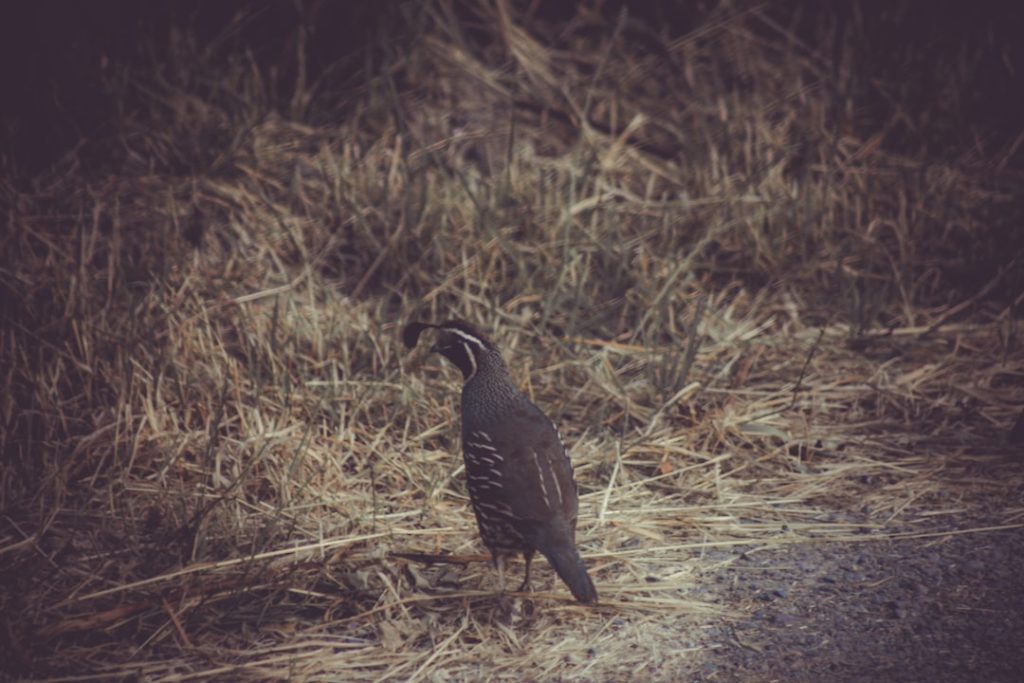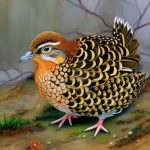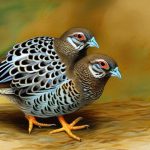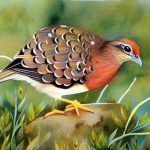Button quail, also known as Chinese painted quail, are small, ground-dwelling birds that are popular among aviculturists for their unique appearance and interesting behaviors. Breeding button quail can be a rewarding experience for bird enthusiasts, as these birds are relatively easy to care for and breed in captivity. Button quail come in a variety of color mutations, making them an attractive addition to any aviary or breeding program. In this article, we will explore the process of breeding button quail, from selecting breeding pairs to caring for chicks and ensuring the health and nutrition of the breeding birds.
Button quail are known for their small size, colorful plumage, and distinctive call, making them a popular choice for aviculture. They are native to Southeast Asia and are often found in grasslands, scrublands, and agricultural areas. In captivity, button quail are relatively easy to care for, requiring a diet of seeds, insects, and fresh greens, as well as a suitable breeding environment. Breeding button quail can be a fascinating and educational experience for bird enthusiasts, and with the right knowledge and preparation, it can be a successful endeavor.
Table of Contents
Key Takeaways
- Button quail breeding is a rewarding hobby that requires careful selection of breeding pairs.
- When selecting breeding pairs, it is important to consider the health, size, and temperament of the quails.
- Setting up the breeding environment involves providing a suitable nesting area, proper lighting, and a balanced diet.
- Egg incubation and hatching require consistent temperature and humidity levels, as well as regular turning of the eggs.
- Caring for button quail chicks involves providing a warm and safe brooding area, as well as a diet high in protein and essential nutrients.
Selecting Breeding Pairs
When it comes to breeding button quail, selecting the right breeding pairs is crucial for success. It is important to choose healthy, unrelated birds that are of breeding age and in good condition. Look for birds that are active, alert, and free from any signs of illness or deformities. Additionally, consider the color mutations of the birds when selecting breeding pairs, as certain mutations may produce more desirable offspring.
It is also important to consider the temperament of the birds when selecting breeding pairs. Some button quail can be aggressive towards each other, so it is best to observe the birds’ behavior before pairing them up for breeding. Ideally, breeding pairs should be housed separately from other birds to minimize stress and competition during the breeding process. By carefully selecting breeding pairs based on health, genetics, and temperament, you can increase the likelihood of producing healthy offspring with desirable traits.
Setting up the Breeding Environment
Creating a suitable breeding environment is essential for successful button quail breeding. The breeding enclosure should be spacious enough to accommodate the breeding pair comfortably, with plenty of room for nesting and foraging. Provide a substrate of sand or fine gravel for the birds to dust bathe in, as this is an important behavior for their health and hygiene. Additionally, include plenty of hiding spots and low vegetation in the enclosure to mimic their natural habitat and provide privacy for the breeding pair.
Temperature and lighting are also important factors to consider when setting up the breeding environment for button quail. The enclosure should be kept at a consistent temperature of around 75-80 degrees Fahrenheit, with a gradual decrease at night. Provide a full spectrum light source to mimic natural daylight and encourage breeding behavior. It is also important to maintain proper ventilation in the enclosure to ensure good air quality for the birds.
In addition to the physical environment, it is important to provide a balanced diet for the breeding pair to support their reproductive health. A diet of high-quality seeds, insects, and fresh greens will provide the necessary nutrients for successful breeding. By creating a suitable breeding environment with proper temperature, lighting, and nutrition, you can encourage natural breeding behaviors in button quail.
Egg Incubation and Hatching
Once the breeding pair has successfully mated, the female will begin laying eggs in the nesting area of the enclosure. Button quail eggs are small and speckled, typically measuring around 0.6 inches in length. The female will lay one egg per day until she has completed her clutch, which usually consists of 8-12 eggs. It is important to provide a suitable nesting material such as fine grass or shredded paper for the female to build her nest and lay her eggs.
After the eggs have been laid, they will need to be incubated in order to hatch. Button quail eggs have an incubation period of approximately 16-18 days, during which time they should be kept at a consistent temperature of around 99-100 degrees Fahrenheit and high humidity levels. It is important to regularly monitor the temperature and humidity levels in the incubator to ensure optimal conditions for egg development.
Once the eggs have hatched, the chicks will need to be carefully monitored and provided with a warm, safe environment to grow and develop. It is important to handle the chicks with care and provide them with a diet of small insects and high-protein chick feed to support their growth. By understanding the process of egg incubation and hatching, you can ensure the successful development of button quail chicks in your breeding program.
Caring for button quail chicks requires attention to detail and a nurturing approach to ensure their health and well-being. After hatching, the chicks should be kept in a warm brooder with a temperature of around 95 degrees Fahrenheit for the first week, gradually decreasing by 5 degrees each week until reaching room temperature. Provide a soft bedding material such as paper towels or pine shavings in the brooder to keep the chicks comfortable and dry.
It is important to closely monitor the chicks for any signs of illness or weakness, as they are vulnerable during their early stages of development. Provide them with a diet of high-protein chick feed and small insects such as fruit flies or mealworms to support their growth and development. Additionally, ensure that they have access to clean water at all times to prevent dehydration.
As the chicks grow, they will become more independent and develop their natural behaviors such as foraging and dust bathing. It is important to provide them with plenty of space to explore and exercise as they mature. By providing a nurturing environment with proper warmth, nutrition, and care, you can ensure the healthy development of button quail chicks in your breeding program.
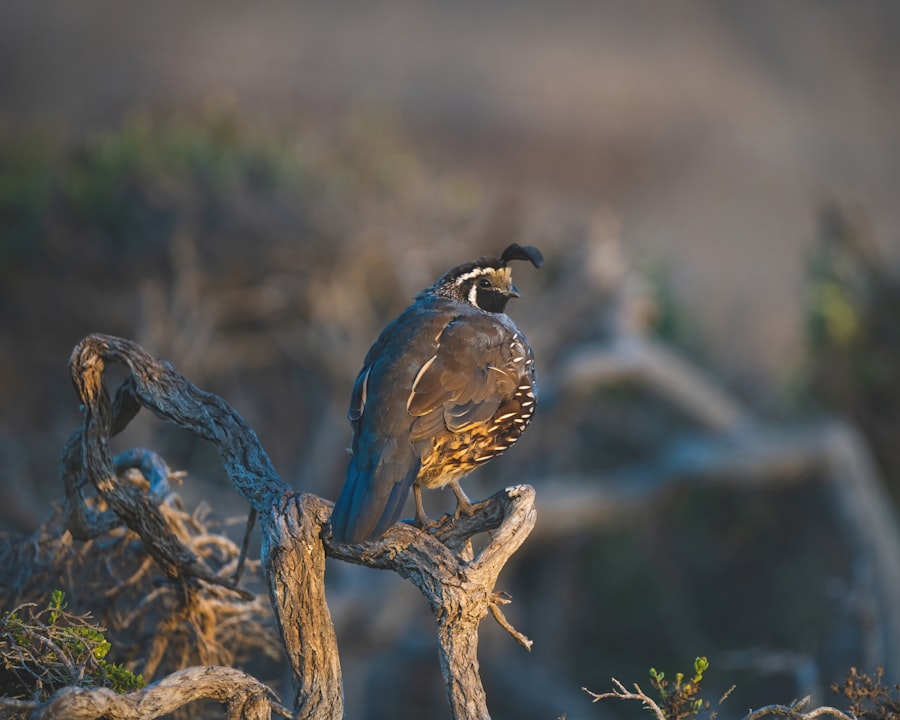
Maintaining the health and nutrition of breeding button quail is essential for successful reproduction and offspring development. A balanced diet is crucial for supporting the reproductive health of breeding pairs, as well as providing essential nutrients for egg production and chick rearing. A diet of high-quality seeds, insects, and fresh greens will provide the necessary protein, vitamins, and minerals for healthy breeding birds.
In addition to nutrition, it is important to monitor the overall health of breeding button quail on a regular basis. Look for signs of illness or distress such as lethargy, loss of appetite, or abnormal behaviors. Provide regular veterinary check-ups to ensure that the birds are free from parasites or diseases that could affect their reproductive health.
Maintaining a clean and hygienic environment is also important for preventing illness and promoting overall health in breeding button quail. Regularly clean and disinfect the breeding enclosure to minimize the risk of bacterial or fungal infections. Provide plenty of fresh water and clean bedding material to keep the birds comfortable and healthy.
By prioritizing the health and nutrition of breeding button quail, you can ensure successful reproduction and produce healthy offspring in your breeding program.
Breeding button quail can be a rewarding experience when approached with knowledge and preparation. Here are some additional tips for successful button quail breeding:
1. Provide plenty of hiding spots and low vegetation in the breeding enclosure to mimic their natural habitat and provide privacy for the breeding pair.
2. Monitor the temperature and humidity levels in the incubator regularly to ensure optimal conditions for egg development.
3. Handle button quail chicks with care and provide them with a warm, safe environment to grow and develop.
4. Regularly monitor the overall health of breeding button quail and provide them with a balanced diet to support their reproductive health.
5. Create a nurturing environment with proper warmth, nutrition, and care for button quail chicks to ensure their healthy development.
By following these tips and guidelines, you can increase the likelihood of successful button quail breeding in your aviary or breeding program.
In conclusion, breeding button quail can be a fascinating and rewarding experience for bird enthusiasts. By carefully selecting breeding pairs, creating a suitable breeding environment, understanding egg incubation and hatching, caring for button quail chicks, prioritizing health and nutrition, and following tips for successful breeding, you can ensure a successful button quail breeding program. With patience, dedication, and proper care, you can enjoy the unique experience of observing these small but captivating birds thrive in your aviary or breeding program.
If you’re interested in breeding button quail, you may also want to explore some creative interior ideas for your chicken coop. Poultry Wizard offers a helpful article on chicken coop interior ideas that can provide inspiration for creating a comfortable and functional space for your quail and other poultry. From nesting boxes to perches, the article covers various design elements that can enhance the well-being of your birds.
FAQs
Button quail breeding refers to the process of mating and raising button quail in order to produce offspring. This can be done for various reasons, such as for conservation, exhibition, or as pets.
Breeding button quail involves providing a suitable environment with proper nesting materials, a balanced diet, and appropriate lighting and temperature conditions. It also requires pairing compatible male and female quails for mating.
Button quail require a well-ventilated enclosure with nesting areas, a diet high in protein, and a consistent light cycle to stimulate breeding behavior. They also need a balanced ratio of males to females for successful breeding.
Button quail typically reach sexual maturity at around 6-8 weeks of age and can start breeding shortly after. The breeding process, from mating to hatching, can take approximately 16-18 days for the eggs to hatch.
Before breeding button quail, it’s important to consider the space and resources needed to care for the offspring, as well as the potential for finding suitable homes for the young quail. It’s also important to ensure that the breeding pair is healthy and free from genetic defects.
Meet Walter, the feathered-friend fanatic of Florida! Nestled in the sunshine state, Walter struts through life with his feathered companions, clucking his way to happiness. With a coop that’s fancier than a five-star hotel, he’s the Don Juan of the chicken world. When he’s not teaching his hens to do the cha-cha, you’ll find him in a heated debate with his prized rooster, Sir Clucks-a-Lot. Walter’s poultry passion is no yolk; he’s the sunny-side-up guy you never knew you needed in your flock of friends!

